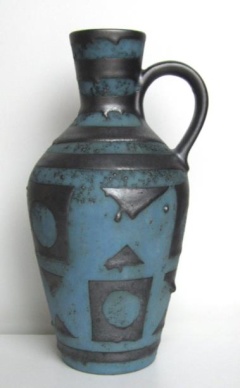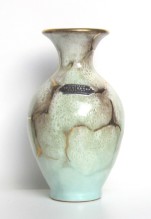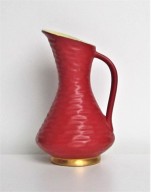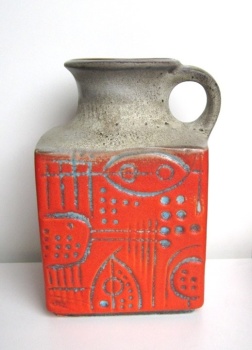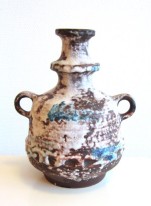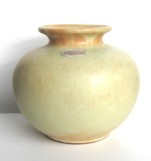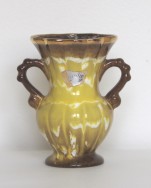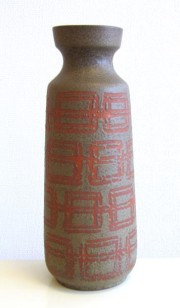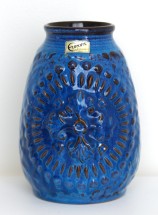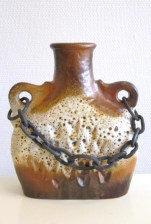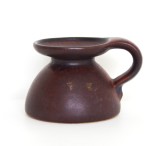Carstens Tönnieshof 1946-1977 (1984)
History
The Carstens family has a long history of ceramics and porcelain manufacturers in Germany. In 1878 Christian Heinrich Carsten bought the wholesale company Carstens & Stahl. Christian and his brother Ernst acquired a ceramics factory in Rheinsberg in 1892. The Carstens family then came to own several ceramics and porcelain factories in Germany. Ernst died in 1925 and after Christans death in 1929, the company was converted into a limited liability company in which Christians son Ernst Carstens was an owner. At the end of World War II, Carstens had collapsed as a company and all factories that ended up in East Germany were expropriated. Ernst Carstens then began with his son Christian to build a new ceramics factory in Fredelsloh called Carstens Tönnieshof. Tönnieshof was the name of the farm where the factory was established. The company was founded in 1946 and production of table ceramics started 1947. Carstens Tönnieshof was successful and in 1953 it had about 400 employees. In 1953, Carstens Tönnieshof established a small factory in Freden an der Leine a few miles from Fredelsloh. In addition to their own ceramics, they also manufactured ceramics for the Austrian company Goldscheider. Production at Freden an der Leine ceased in 1960. Ernst Carstens died in 1954 and the company was taken over by his son Christian Carstens. Carstens Tönnieshof continued to expand and in the early 1970s several branches were established in Argentina, Brazil, Chile, Australia and Austria. In the mid 70's profitability in the ceramics industry fell and the company went bankrupt in 1977. The business were taken over by employees under the name Kiel Atelier and continued to 1984.
Designers
Trude Carstens
(1946-early 60s)
Heinz Siery
(1959-1967)
Gerda Heuckeroth
(1962-1964)
Dieter Peter (early 70s)
Rudolph Christmann
(1967-1968)
Helmut Scholtis (60s) (Decors)
Shapes and decors
Very little is known about Carstens Tönnieshof earliest production of table ceramics. The first known decorative ceramics are probably from the period 1949-1954 and had simple forms and discreet colours. More advanced decors with organic patterns and elements of gold was developed by Trude Carstens in the mid 50s. Examples of this type of decors are Utrecht and Graz. Some forms with geometric, moulded patterns was also developed in the end of the 50s. One examples is the reliefseries Carmen from 1958.
Heinz Siery began at Carstens 1959 and his designs with harmonious proportions are common in Carstens early 60s production. The colours in the late 50s and early 60s are often pastel colours.
The decor Ankara by Helmut Scholtis was introduced 1963 and was a very successfull decor that was used on many forms. It was produced untill 1969. The decor is an example of the wax reduction technique that Carstens and many other companies used during the 60s. Carstens produced many variations of the Ankara decor. During the 60s Carstens also used different decor techniques on the same forms which created a huge variation. Lava glazes was also used dureing the second half of the 60s.
Carstens Tönnieshof 1524-23. Decor Ankara 1963-1969.
Decor by Helmut Scholtis.
Carstens Tönnieshof
452 2. Decor Utrecht (green?). This form and decor was probably designed by Trude Carstens. This vase is from ca. 1955-1956.
Carstens Tönnieshof 925. The decor is probably from the relief series Carmen from 1958. This is one exampe of a moulded geometric pattern.
During the 60s Heinz Siery and Gerda Heuckeroth also developed forms with geometric patterns. Examples designed by Heinz Siery are Brasilia and the form series Manilla from 1967. The Europa series from 1967 is also a series with moulded geometric patterns, probably inspired of ancient European cultures.
In the end of the 60s and early 70s Dieter Peter and Rudolph Christman created advanced, odd forms often with advanced lava glazes.
The last years before the bancruptcy 1977 the forms and decors became more plain and the colours were often in brown or discreet colours.
Carstens Tönnieshof 7152 20. Design Gerda Heuckeroth 1968.
Carstens Tönnieshof C801.
Decor Brazilia. Designed by Heinz Siery. Carstens Atelier series. First half of the 60s.
Carstens Tönnieshof 7326 25 by Dieter Peter. Early70s.
Carstens Tönnieshof 236 100. An early jug with label "Qualitäts-erzeugnis". This jug is from ca. 1947-1956.
Carstens Tönnieshof 414 3. This form and decor is a typical example of an early piece from Carstens Tönnieshof. This vase is from ca. 1949-1954.
Carstens Tönnieshof 462. Decor Utrecht (red?). Probably designed by Trude Carstens. This vase is from ca. 1955-1956.
Carstens Tönnieshof 529 12. Vases like this, inspired by the Jugend/Art Nouveau style, are very rare from Carstens Tönnieshof. This vase is from ca. 1957-1960.
Carstens Tönnieshof 1525 28.
Form series Malmö by Heinz Siery 1962. This is an example of several decor techniques used on the same form.

